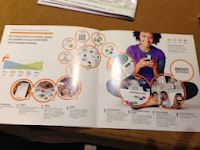Stereotyping is a natural human tendency. Brands are stereotypes. When you think of Disney, what comes to mind? Nike? BMW?
Brand stereotypes create reality. For example, Coors - cold activated cans, Rocky Mountains in the background, frosted bottles. You've seen all the commercials. They create the idea in your mind that Coors' beer is actually colder and more refreshing than other brands. They are tapping into your unconscious and making you believe it.
Stereotypes resist change, but CAN change. In research studies, most people won't change their minds, even after contact itself. Those ideas are so deeply embedded in their minds, that actual proof which negates it, doesn't affect them. However, a few of those who came in contact, actually did change. In order to change your brand's stereotype, you must first make small, significant changes to tap into your consumer's unconscious.
The interactions must feel cooperative. If consumers feel you have the same ideals/goals they do, you will see positive change. For example - Guiness. Not a beer you normally associate with sports. If you saw a commercial of a bunch of guys sitting around watching sports, eating chips and drinking Guiness, nobody would believe it. In this commercial, they associate themselves with loyalty, friendship and having the same values you do, which sets the context for their desired change.
You must drive change with the right type of contact - it must feel authentic. Stereotypes are part of who we are. Find out how people see themselves and how they see your brand. You will then be able to align the two and position your brand the way YOU want people to see it.
Bottom line for market research professionals. Think of your brand as a stereotype and strive to understand the full stereotype. Then you will be able to affect change.





















